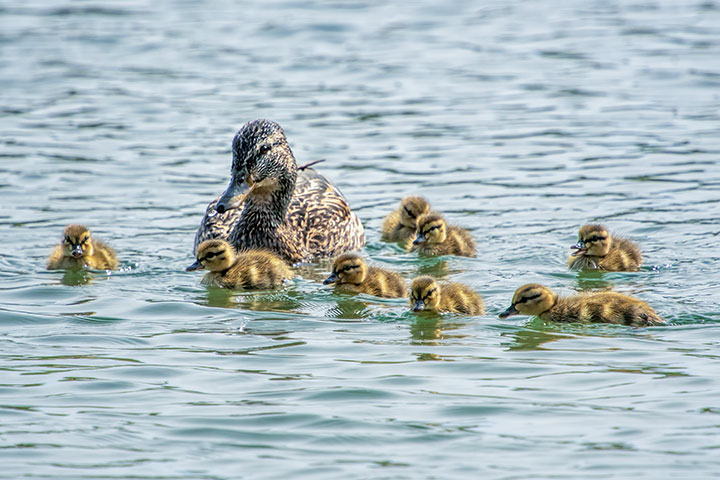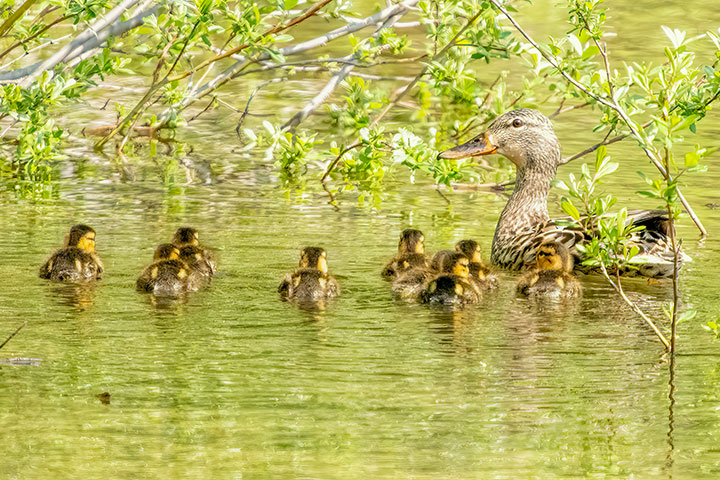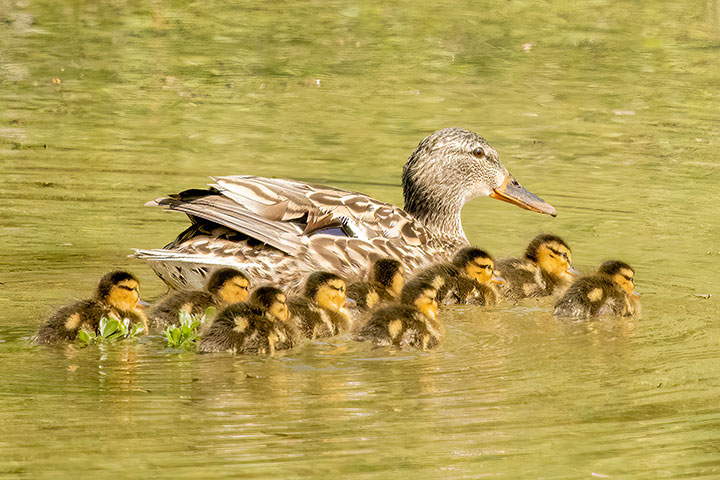I might not have realized what was going on had I not seen it before: Five years ago, I watched the rape of a new mallard mother. Curiously, yesterday’s altercation took place within meters of the previous location, but this time visibility was diminished by overgrown bushes.
This is the time of year when waterfowl parade new chicks around the Lake. They come in two flavours, one parent or two parents. The distinction seems to be whether the parents look alike or not. If parents are hard to tell apart (Canada Goose, Loons), each flock of youngsters has two parents tending it. If on the other hand, the parents are easily distinguished, (Mallard Ducks, Common Merganser) only the mother tends the chicks. This later group is more vulnerable in that a father is not there to protect the flock. Indeed, the biggest threat seems to be from an over abundance of unattached males of the same species who see the mother as vulnerable and slow moving. This picture of a mallard and her chicks was taken a few days earlier.

Yesterday’s scene took place on the edge of and midst flooded bush.

Two mallard males came after the mother in the bushes leaving the chicks to wander on their own.

While most of the action took place in the brush amidst much splashing and squawking, at one point a male chased the female right past me.

Soon afterwards the female was back with her chicks. But, as she moved out of sight, she was again being chased by a male mallard.


Have a heart you male mallard!
Interesting that look-alike parents both tend young while with dimorphic parents, the female parents alone. Can you say more about this? Is there an advantage?
Sarah, you ask an interesting question: Why the change in behaviour depending on appearance of the male. I do not know the answer. However, a series of three articles discusses the behaviour. Start with https://smbasblog.com/2016/07/19/sexual-dimorphism-reversal-and-polyandry-part-i/ and continue with the sites it links to.
Alastair, thanks for the references, I read them but am still wondering why this occurs as it does. I’ll keep searching!
Sarah